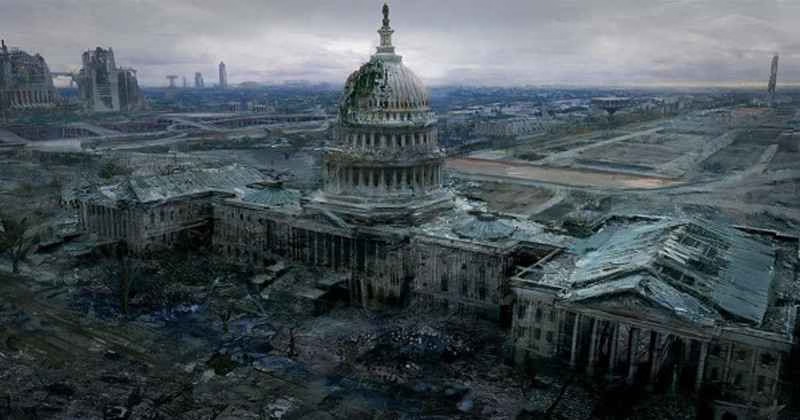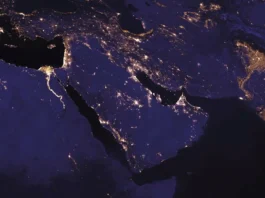Introduction: The Inevitable Decline of Great Societies
History’s greatest empires Rome, the Maya, the Ottomans all followed the same tragic arc: rise, golden age, and eventual collapse. But how do civilizations collapse, and why do powerful societies ignore the warning signs until it’s too late?
The answer lies not just in wars or disasters, but in human psychology, institutional decay, and the slow erosion of resilience. By examining past collapses, we uncover urgent lessons for today’s world a world facing political instability, climate threats, and cultural fragmentation.
The study of societal collapse mechanisms reveals patterns that transcend time and geography. From the ancient Mesopotamian city-states to the Soviet Union’s disintegration, certain fundamental processes recur with remarkable consistency. Understanding these patterns isn’t merely academic it provides a framework for assessing our own civilization’s trajectory and vulnerabilities.

This in-depth exploration reveals:
- ✔ The 5 stages of civilizational collapse (and where modern society stands)
- ✔ Why denial is the first symptom of decline
- ✔ Shocking parallels between fallen empires and today’s world
- ✔ The #1 mistake civilizations repeat before collapse
Let’s dive into how civilizations collapse and whether ours can avoid the same fate.
Stage 1: The Rise – How Ambition Builds Empires
Every great civilization begins with struggle, innovation, and collective purpose. This initial phase is characterized by social cohesion, technological advancement, and institutional development that together create the foundation for expansion and prosperity.
The Asabiyyah Effect (Ibn Khaldun’s Law)
14th-century scholar Ibn Khaldun identified asabiyyah social cohesion as the key to power. Hardship forces societies to unite, but success breeds complacency. This concept, developed in his groundbreaking work “The Muqaddimah,” provides one of the earliest systematic analyses of civilization rise and fall cycles.

Ibn Khaldun observed that desert tribes possessed strong social bonds forged through shared hardship. When these tribes conquered settled regions, they initially maintained their cohesion, creating powerful dynasties. However, within three to four generations, luxury and comfort eroded these bonds, leaving them vulnerable to new groups with stronger asabiyyah.
Example: The Abbasid Caliphate (750–1258) rose through meritocracy and science, but later rulers indulged in luxury while the empire crumbled.
The Abbasids initially created a cosmopolitan society that valued knowledge and innovation, establishing the House of Wisdom in Baghdad and translating Greek, Persian, and Indian texts. This intellectual flourishing coincided with their greatest territorial extent. However, as rulers became increasingly isolated in their palaces and dependent on Turkish slave soldiers (Mamluks), the empire’s cohesion weakened, culminating in the devastating Mongol invasion of 1258.
Toynbee’s Challenge Response Theory
Historian Arnold Toynbee found that civilizations thrive when they solve major challenges (famine, invasion, resource scarcity). But when they grow rigid, collapse follows. His monumental “A Study of History” analyzed the patterns of civilization development across 21 major societies.
Toynbee’s theory suggests that civilizations don’t simply die from external attacks they first lose their creative capacity to respond to challenges. This internal weakening precedes external defeat. The challenge and response mechanism explains why some societies adapt and flourish while others stagnate and collapse.
Example: Rome mastered war and law, but its corrupt, bloated bureaucracy made reform impossible.
Rome’s early republic faced existential threats from Carthage and various Italian tribes, spurring innovations in military organization, engineering, and governance. These adaptive responses transformed Rome from a small city-state into a Mediterranean superpower. However, by the 3rd century CE, the empire had become so bureaucratically complex and politically rigid that it could no longer effectively respond to challenges like Germanic invasions, economic crises, and climate change.
Key Insight: The seeds of collapse are planted at the peak of power.
This paradox that success creates the conditions for failure appears consistently throughout history. The very adaptations that allow a civilization to thrive eventually become liabilities when circumstances change. This phenomenon, which Joseph Tainter calls the “complexity trap in societal collapse,” helps explain why advanced societies are not immune to failure despite their apparent advantages.
The Rise and Fall of the Roman Empire: Unraveling the Epic Saga
Stage 2: Denial – The Fatal Blind Spot of Declining Empires
The Normalcy Bias: “This Can’t Happen to Us”
Psychologists find that humans ignore slow-moving disasters (like climate change or debt crises) because change feels abstract—until it’s too late. This cognitive limitation, known as normalcy bias in historical collapses, affects not just individuals but entire societies.
The normalcy bias manifests as a collective inability to recognize existential threats that develop gradually. Societies become invested in maintaining the status quo, dismissing warning signs as temporary anomalies rather than systemic problems. This psychological barrier to acknowledging decline appears consistently in historical accounts of civilizational collapse.

Example: Before the French Revolution, aristocrats dismissed bread riots as “temporary unrest.”
The French nobility continued their lavish lifestyle at Versailles despite mounting evidence of agricultural crisis, financial bankruptcy, and popular discontent. Even as the price of bread the staple food for most French citizens rose to nearly a full day’s wages for the average worker, the court maintained its extravagant balls and ceremonies. This disconnect persisted until revolutionaries were literally at the palace gates.
Elite Disconnect: Ruling Classes Lose Touch
Collapsing civilizations often have out-of-touch leaders who hoard wealth while infrastructure decays. This elite overproduction and inequality creates a dangerous gap between those who make decisions and those who experience their consequences.
Peter Turchin’s structural-demographic theory identifies elite overproduction where too many wealthy, educated individuals compete for a limited number of prestigious positions as a key driver of instability. This competition increases political polarization and decreases cooperation on solving societal problems.
Example: The Roman elite hosted lavish feasts while inflation ruined the economy.
During the Crisis of the Third Century, Roman senators continued to build ever-larger villas and host extravagant games while debasing the currency and neglecting frontier defenses. The empire nearly collapsed before Diocletian’s reforms temporarily stabilized the situation, though at the cost of increased authoritarianism and economic regimentation.
Modern Parallel: Rising inequality and political polarization suggest many societies are in this stage now.
Today’s wealth concentration mirrors pre-collapse patterns in past societies. In the United States, the top 1% own more wealth than the bottom 90% combined, while political discourse has become increasingly tribal and uncompromising. These trends match what historians identify as warning signs of institutional decay in complex societies.
Stage 3: Decadence – Luxury Weakens Survival Instincts
The Hedonism Trap
Societies shift from discipline to indulgence, weakening their ability to face crises. This transition from production-focused to consumption-focused values undermines the very foundations that enabled prosperity in the first place.
The cultural decay in declining civilizations typically involves a shift away from values like delayed gratification, civic duty, and collective sacrifice toward immediate pleasure, personal entitlement, and status competition. This transformation affects everything from art and literature to economic activity and military readiness.

Example: The Maya built giant monuments while deforestation caused droughts.
At the height of Maya civilization (8th-9th centuries CE), rulers competed to build ever-larger temples and monuments, requiring massive deforestation for construction materials and agricultural expansion. Archaeological evidence shows that as environmental stress increased due to drought, elites responded by intensifying monument construction and ritual activity rather than adapting their resource management practices. This misallocation of resources accelerated their collapse.
Short-Term Thinking Over Long-Term Survival
Collapsing empires prioritize quick profits over sustainability. This temporal myopia in decision-making becomes institutionalized, making it nearly impossible to address long-term challenges effectively.
The compression of time horizons affects both public and private decision-making. Political leaders focus on the next election, corporations on quarterly profits, and individuals on immediate consumption. This collective short-termism prevents the long-range planning necessary to address complex challenges like infrastructure maintenance, environmental sustainability, and demographic shifts.
Example: Spain’s 16th-century gold obsession led to reckless inflation instead of economic innovation.
When Spain extracted massive amounts of gold and silver from its American colonies, it experienced temporary prosperity but failed to develop productive domestic industries. Instead of investing in education, infrastructure, or manufacturing, the Spanish crown used its wealth for luxury consumption and military adventures. The resulting inflation and lack of economic diversification contributed to Spain’s long decline from European superpower to peripheral state.
Warning Sign Today: Consumerism, debt-driven growth, and political short-termism mirror these patterns.
Modern economies increasingly rely on consumption rather than production, with services and finance displacing manufacturing and agriculture. Government debt has reached historic levels in many countries, while infrastructure maintenance is deferred. These trends reflect the same short-term optimization versus long-term resilience trade-offs that preceded historical collapses.
Stage 4: Institutional Rot – When Systems Fail
Corruption Erodes Trust
Once-efficient governments become self-serving and inefficient. This institutional decay in complex societies undermines the legitimacy of authority and reduces collective problem-solving capacity.
Corruption isn’t merely a moral failing but a systemic breakdown that diverts resources from productive uses, increases transaction costs, and erodes social trust. When citizens perceive institutions as corrupt, they withdraw their cooperation, further weakening societal resilience.

Example: The Ottoman Empire’s bureaucracy was so corrupt that reforms failed for centuries.
By the 18th century, Ottoman administrative positions were openly bought and sold, with officials recouping their investment through bribes and extortion. Multiple reform efforts including the Tanzimat period (1839-1876) failed to reverse this corruption, as entrenched interests sabotaged changes that threatened their privileges. This institutional sclerosis prevented effective responses to European economic and military competition, contributing to the empire’s gradual dismemberment.
Military Overstretch
Empires collapse when they expand beyond their ability to govern. This imperial overextension theory explains why military power alone cannot sustain a civilization without proportional economic and administrative capacity.
Paul Kennedy’s “The Rise and Fall of the Great Powers” demonstrates how imperial overstretch the gap between a nation’s global commitments and its ability to defend them all simultaneously has contributed to the decline of numerous great powers. Maintaining distant territories and military forces creates enormous costs that eventually outweigh the benefits of empire.
Example: The Soviet Union bankrupted itself in Afghanistan and the arms race.
The Soviet economy, already struggling with inefficiencies, could not sustain both domestic consumption and massive military expenditures (estimated at 15-17% of GDP). The Afghan War (1979-1989) cost approximately $8 billion annually while yielding no strategic benefits. This economic strain contributed significantly to the Soviet collapse, demonstrating how resource misallocation in failing states accelerates decline.
Modern Risk: The U.S. faces rising debt, political gridlock, and global overextension.
The United States maintains nearly 800 military bases in more than 70 countries, with defense spending exceeding the next nine countries combined. Meanwhile, domestic infrastructure receives inadequate investment, and political polarization prevents coherent long-term planning. These patterns mirror the warning signs of imperial decline identified by historians studying previous hegemonic powers.
Stage 5: The Breaking Point – Collapse Triggers
Environmental Disaster
Many civilizations fell after ignoring ecological limits. This environmental determinism in societal collapse highlights how human societies ultimately depend on natural systems they often take for granted.
Jared Diamond’s “Collapse: How Societies Choose to Fail or Succeed” documents numerous cases where environmental mismanagement contributed to civilizational failure. These examples demonstrate that advanced technology and complex social organization do not exempt societies from ecological constraints.

Example: The Anasazi (Ancient Puebloans) collapsed after depleting water supplies.
The Anasazi built sophisticated cliff dwellings and irrigation systems in the American Southwest, supporting a population of up to 30,000 people. However, a combination of drought, deforestation, and soil erosion undermined their agricultural base. By 1300 CE, they had abandoned their magnificent settlements at Mesa Verde and Chaco Canyon, demonstrating how climate change impacts on historical societies can overwhelm even ingenious adaptation efforts.
External Invasion (or Internal Revolt)
Weak empires are exploited by rivals or torn apart by rebellion. These dramatic events, while often portrayed as sudden catastrophes, typically represent the culmination of long-term weakening processes.
The barbarian invasion theory of Rome’s fall illustrates this pattern. Germanic tribes had interacted with Rome for centuries, often serving as mercenaries and trading partners. They only successfully invaded when internal Roman weaknesses depopulation, economic contraction, and military deterioration created opportunities they could exploit.

Example: Rome fell to Muslims after centuries of internal decay.
The Byzantine Empire (Eastern Roman Empire) gradually lost territory to Arab and Turkish Muslim forces, culminating in the Ottoman conquest of Constantinople in 1453. This process took over 800 years, with the empire repeatedly losing and sometimes regaining territories. The final collapse came after centuries of economic decline, civil wars, and territorial contraction had reduced the once-mighty empire to little more than its capital city.
Today’s Threats: Climate change, AI disruption, and cyber warfare could be modern collapse triggers.
Contemporary societies face novel threats that could serve as collapse triggers. Climate change threatens food security and coastal infrastructure, while artificial intelligence may disrupt labor markets and social stability. Cyber warfare capabilities could disable critical infrastructure without traditional military confrontation. These modern challenges require the same adaptive capacity that historical societies often lost before collapse.
The Complexity Trap: Joseph Tainter’s Theory of Collapse
Anthropologist Joseph Tainter offers perhaps the most comprehensive explanation for why complex societies collapse. In his seminal work “The Collapse of Complex Societies,” Tainter argues that civilizations develop increasingly elaborate solutions to problems, adding layers of complexity that eventually yield diminishing returns.
Initially, complexity solves problems effectively specialized labor increases productivity, bureaucracies coordinate activities efficiently, and technologies overcome limitations. However, maintaining this complexity requires growing energy and resource inputs. Eventually, the marginal returns on complexity turn negative, making simplification (collapse) inevitable.
Example: Western Roman Empire collapse represented simplification when complexity became unsustainable.
Rome’s elaborate tax system, professional army, extensive bureaucracy, and urban infrastructure became impossible to maintain as agricultural productivity stagnated and population declined. The “barbarian kingdoms” that replaced Roman authority represented simpler, more sustainable social organizations for their time and resource constraints.
Tainter’s theory explains why societies don’t simply adapt to challenges complexity itself becomes the problem. This perspective suggests that collapse isn’t always a catastrophe but sometimes a rational simplification when complexity costs exceed benefits.
Are We Next? 5 Warning Signs of Modern Collapse
- Declining Social Trust (Political polarization, media distrust)
- Unsustainable Debt (U.S. national debt at $34+ trillion)
- Resource Depletion (Water shortages, soil degradation)
- Cultural Fragmentation (Loss of shared identity)
- Technological Dependence (AI, cyber vulnerabilities)
Critical Question: Can we reform in time or will we repeat history?
Conclusion: Breaking the Cycle of Collapse
How civilizations collapse is not a mystery—it’s a playbook we’ve seen before. The Roman, Mayan, and Soviet collapses all followed similar paths: denial → decadence → disaster.
Understanding these patterns provides both warning and hope. Collapse is not inevitable it results from specific failures of adaptation and governance that can be identified and addressed. The study of historical collapse prevention strategies reveals three critical interventions that have helped societies navigate existential challenges.
3 Ways to Avoid the Same Fate:
- Reform Institutions Before They Fail (Fix corruption, update laws)
- Prioritize Long-Term Survival Over Short-Term Gains (Climate action, fiscal responsibility)
- Rebuild Social Cohesion (Shared purpose over division)
Final Warning:
“Societies crumble when elites ignore decay until the gates are broken down.”
The choice is ours. Will we learn from history or become its next victim?
The study of civilizational collapse is ultimately about choices the accumulated decisions of individuals, institutions, and societies that either build resilience or accelerate decline. By understanding the patterns of societal collapse and renewal, we gain agency in shaping our collective future. The question is not whether our civilization will face existential challenges it already is but whether we will respond with the wisdom, cooperation, and foresight that history teaches are essential for survival.




